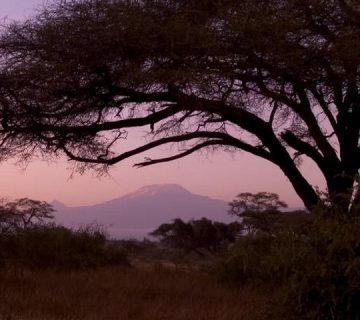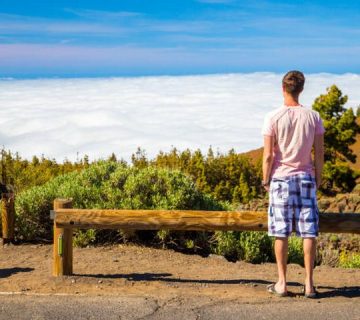How To Plan A Kilimanjaro Climb For Large Families
Mount Kilimanjaro, the highest peak in Africa, is not just a mountain; it’s a canvas where adventure paints unforgettable family memories. If you’re dreaming of orchestrating a family expedition but worry about managing a large group, you’ve come to the perfect guide. Organized by the Kilimanjaro Centre for Trekking and Ecotourism (KCTE), this blog will walk you through the essential steps of planning a Kilimanjaro climb for large families. Let’s transform your lofty ambitions into a tangible, exhilarating journey!
Understanding the Allure of Kilimanjaro for Families
Why does Kilimanjaro beckon families from around the world? It’s the mesmerizing beauty, the challenge, and the joy of achievement together that make it a prime destination for families. Climbing Kilimanjaro offers a unique opportunity for bonding and instills a sense of accomplishment and resilience in young and old alike.
Step 1: Picking the Right Route
Choosing the right path up Kilimanjaro is crucial, especially for large groups with varying ages and fitness levels. Routes like the Marangu and the Machame offer different challenges and scenic views.
-
Marangu: Often dubbed the "Coca-Cola" route, is the only route with hut accommodations, which might be more suitable for families looking to avoid camping out in the cold.
-
Machame: While a bit more strenuous, it’s great for older children and adults as it offers more striking scenery and a higher success rate due to better acclimatization opportunities.
Discuss with a KCTE expert to find the route that best suits your family’s needs and preferences.
Step 2: Training Together as a Family
Training for Kilimanjaro is a fantastic way for your family to get into shape while spending quality time together. Start with light exercises and gradually increase the intensity:
-
Regular Hikes: Engage in regular hiking in your local area. Try to simulate Kilimanjaro’s terrain by including some hill climbs.
-
Cardio and Strength Training: Incorporate cardiovascular and strength training exercises to build endurance and muscle.
Remember, preparation is a part of the adventure, and doing it together strengthens the team spirit.
Step 3: Scheduling Your Climb
Timing is everything. The best times to climb Kilimanjaro are during the dry seasons, from June to October and from December to March. Consider school holidays and work schedules. Booking well in advance with KCTE ensures that all family members are guaranteed spots and the best accommodations during these peak seasons.
Step 4: Gear and Packing List
Equipping a large family for a trip like this can seem daunting. However, focusing on essentials and sharing resources can make it manageable:
-
Clothing: Layered clothing is key. Pack moisture-wicking base layers, insulating layers, and a waterproof outer layer.
-
Footwear: Invest in good-quality hiking boots for everyone. Make sure they are well-broken-in prior to the trip.
-
Shared Items: Items like sunscreen, first aid kits, and snacks can be shared among family members to reduce individual loads.
KCTE provides a comprehensive packing list specifically designed for family groups, which can be very helpful.
Step 5: Hiring the Right Guides and Porters
A successful family climb is often down to having the right support team. KCTE’s skilled guides and porters are not only experts in navigating the mountain but are also experienced in supporting groups of all sizes and ages. They ensure safety, manage the pace, and enhance the overall experience with their local knowledge and stories.
Step 6: Understanding Altitude Sickness
Altitude sickness can affect anyone, regardless of age or fitness level. Educating your family about the symptoms and ensuring a climb pace that allows for proper acclimatization is vital. KCTE’s guided climbs focus on a “pole pole” (slowly, slowly in Swahili) approach, prioritizing health and safety over speed.
Step 7: Making Learning Fun
Kilimanjaro is not just a physical challenge; it’s a living classroom. From geology to local culture, there’s much to learn:
-
Flora and Fauna: Teach your kids about the unique vegetation zones and wildlife.
-
Cultural Engagement: Learn a few basic phrases in Swahili to interact with locals and understand their culture.
Wrapping Up: Why Book With KCTE?
Booking your family’s Kilimanjaro climb with the Kilimanjaro Centre for Trekking and Ecotourism isn’t just about convenience. It’s about ensuring a memorable, safe, and inspiring experience tailored to the needs of a large family. Our expert planners, child-friendly guides, and attention to detail make all the difference.
Ready to Reach the Roof of Africa?
Climbing Kilimanjaro with your family is more than just a holiday. It’s a journey of bonding, overcoming challenges together, and making memories that last a lifetime. Let KCTE help you make it possible. Visit our website or contact us today to start planning your family’s adventure!
FAQ
Q: What is the minimum age for children climbing Kilimanjaro?
A: The minimum recommended age is 10 years, but it depends on the child’s fitness and altitude experience.
Q: How long does it take to climb Kilimanjaro?
A: It typically takes 5 to 9 days, depending on the route and pace.
Q: What are the main safety measures for climbing Kilimanjaro?
A: Key safety measures include proper acclimatization, hiring experienced guides, and having the right gear.
Q: Can we rent some of the equipment locally?
A: Yes, KCTE offers rental options for major gear items like sleeping bags and trekking poles.
Q: Are there special group discounts for large families?
A: Absolutely, KCTE offers tailored group packages that provide better rates for large families.
Take that first step on a journey of a thousand memories – climb Kilimanjaro with your family, guided by the experts at KCTE!




